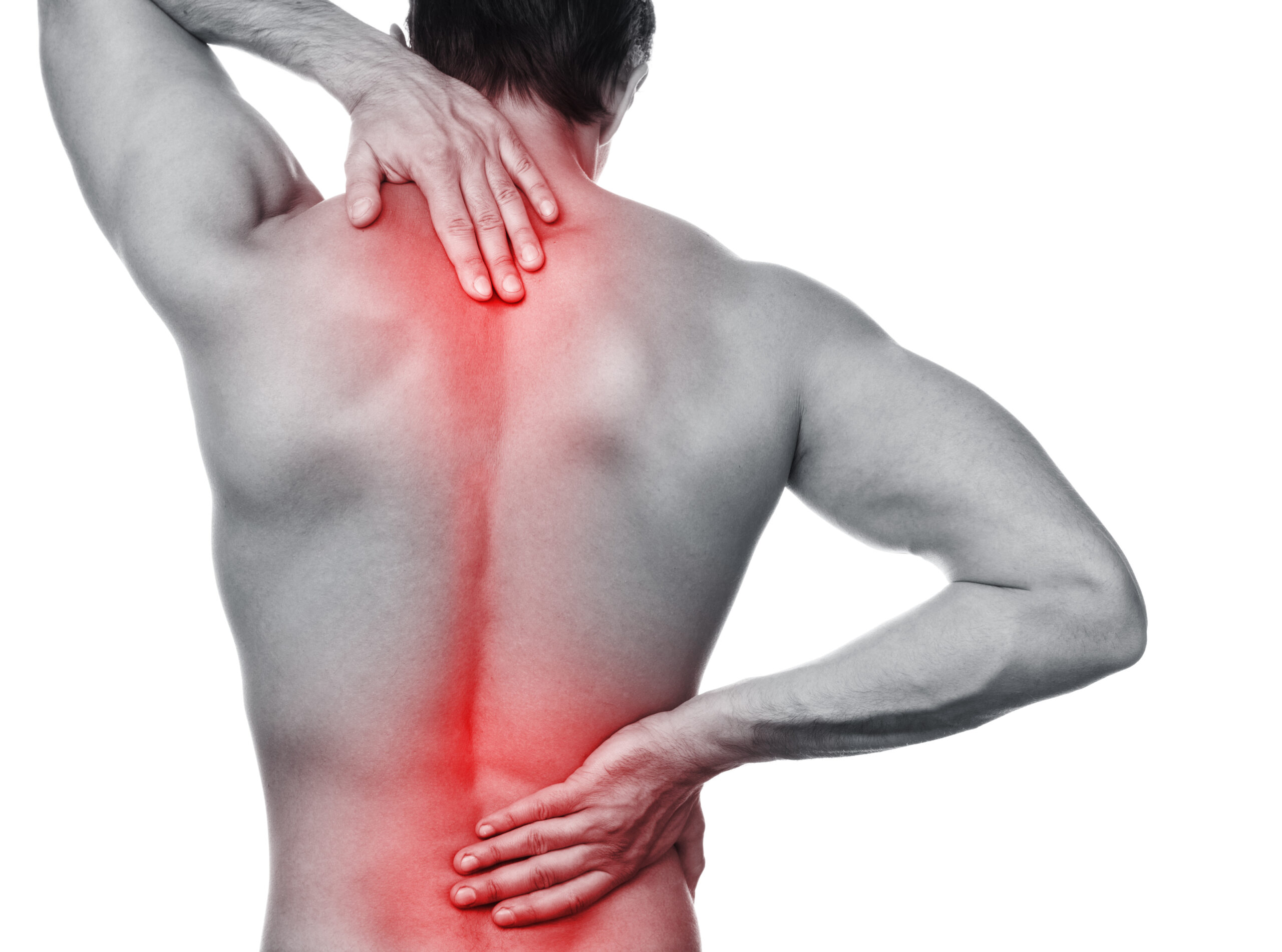Muscle pain, whether acute or chronic, often requires medical interventions to alleviate discomfort and promote healing. Here, we delve into various medical treatments and therapies commonly used for managing muscle pain:
- Physical Therapy (PT):
- Prescription Medications:
- Alternative Therapies:
- Trigger Point Injections:
- Botulinum Toxin Injections:
- Platelet-Rich Plasma (PRP) Therapy:
- Regenerative Medicine:
- Medication Management:
- Surgery:
The choice of treatment depends on the specific type and cause of muscle pain, as well as the individual’s overall health and preferences. A thorough evaluation by a professional is essential to determine the most suitable approach to managing muscle pain effectively. Following is the detailed summary of the topics:
1.Physical Therapy (PT)
Physical therapy is a cornerstone of muscle pain management, offering a multifaceted approach to recovery. Skilled physical therapists collaborate with patients to create personalized exercise regimens tailored to their specific needs and conditions. Key components of PT include:
– Muscle Strengthening: Targeted exercises are designed to enhance muscle strength, stability, and endurance, aiding in the rehabilitation process.
– Flexibility Enhancement: Stretching routines are prescribed to improve muscle flexibility, increase range of motion, and alleviate stiffness.
– Pain Management Techniques: Physical therapists employ various modalities, such as heat and cold therapy, to alleviate pain and reduce inflammation.
– Ultrasound Therapy: Ultrasound technology may be used to deliver deep heat to the affected area, promoting blood flow and tissue healing.
– Electrical Stimulation: Electrical stimulation devices are utilized to stimulate muscles, relieve pain, and improve muscle function.
– Manual Therapy: Hands-on techniques, including massage, joint mobilization, and myofascial release, are employed to reduce muscle tension and improve overall musculoskeletal function.
Physical therapy fosters a patient-centered approach, focusing on education, self-management techniques, and gradual progression toward improved muscle health and function. Through this collaborative effort, individuals can regain mobility, reduce pain, and enhance their quality of life.
2.Prescription Medications for Muscle Pain
The management of muscle pain often involves the use of prescription medications, which can vary based on the severity of the pain and its underlying cause. Docotors recommend the following medications:
– Nonsteroidal Anti-Inflammatory Drugs (NSAIDs): NSAIDs, are commonly prescribed to reduce pain and inflammation associated with muscle injuries or conditions like tendonitis and bursitis.
– Muscle Relaxants: Muscle relaxant medications are prescribed to alleviate muscle spasms and tension, promoting relaxation and pain relief.
– Pain Relievers: For more severe pain, opioid medications may be prescribed. However, due to their potential for addiction and side effects, opioids are typically used cautiously and for short durations.
– Antidepressants: Certain antidepressant medications can be effective in managing chronic muscle pain by modulating pain signals in the brain and spinal cord.
– Anticonvulsants: Medications typically used to treat epilepsy neuropathic muscle pain by stabilizing nerve activity.
– Corticosteroids: In some cases of muscle pain associated with inflammation, corticosteroids may be prescribed to reduce swelling and discomfort.
– Topical Analgesics: Creams, gels, or patches containing topical analgesics can be applied directly to the skin over the painful area to provide localized relief.
The choice of medication depends on the specific diagnosis and the individual’s overall health. Healthcare providers carefully assess the benefits and potential risks of each medication before prescribing them. It’s essential for patients to follow their healthcare provider’s recommendations, adhere to prescribed dosages, and report any side effects promptly to ensure safe and effective pain management.
3.Alternative Therapies for Muscle Pain
In addition to traditional medical treatments, several alternative therapies offer valuable options for managing muscle pain. These alternative approaches focus on holistic well-being and may provide complementary relief:
– Acupuncture entails the precise insertion of thin needles into particular points on the body. This ancient Chinese therapy aims to stimulate natural healing processes, balance energy flow (qi), and alleviate muscle pain. Many individuals find acupuncture effective in reducing pain and promoting relaxation.
– Chiropractic Care: Chiropractic care is provided by chiropractors who specialize in spinal health and alignment. Through adjustments and manual manipulations, chiropractors work to realign the spine and improve nerve function. This can help alleviate muscle pain, especially when it’s related to musculoskeletal issues or nerve compression.
– Massage Therapy: Skilled massage therapists employ various techniques to address muscle pain. Massage therapy can effectively alleviate muscle tension, enhance blood circulation, and induce a state of relaxation. Modalities like Swedish massage, deep tissue massage, and myofascial release can be particularly beneficial for easing muscle discomfort.
– Myofascial Release: Myofascial release is a specialized technique that targets the fascia, a connective tissue surrounding muscles. By applying gentle and sustained pressure, myofascial release aims to release tension in the fascia, which can contribute to muscle pain. This therapy can be effective for individuals experiencing chronic muscle tightness and discomfort.
It’s crucial to emphasize that the efficacy of these alternative therapies may differ from one individual to another. Individuals seeking these treatments should consult with qualified and experienced practitioners to discuss their specific needs and goals. In some cases, a combination of alternative therapies and conventional medical treatments may provide the most comprehensive approach to managing muscle pain.
4.Trigger Point Injections: Targeted Relief for Myofascial Pain Syndrome
For individuals experiencing myofascial pain syndrome, trigger point injections can offer effective relief. This therapeutic approach involves the precise injection of a local anesthetic or corticosteroid into specific trigger points, with the goal of alleviating pain and muscle tension.
Here’s a closer look at trigger point injections and how they can benefit those dealing with myofascial pain syndrome:
- Understanding Myofascial Pain Syndrome:
Myofascial pain syndrome is characterized by the presence of trigger points—localized knots or tight bands within muscle tissue. These trigger points can be painful when pressed and are often associated with muscle stiffness, limited range of motion, and referred pain to other areas of the body.
- The Role of Trigger Point Injections:
Trigger point injections are administered directly into these tender trigger points. The injections typically contain one of two substances:
– Local Anesthetic: Anesthetic agents like lidocaine or bupivacaine are used to provide immediate pain relief by numbing the affected area. This can help break the cycle of pain and muscle tension.
– Corticosteroid: In some cases, a corticosteroid, such as cortisone, may be included in the injection to reduce inflammation and provide longer-lasting relief.
- The Injection Procedure:
The injection procedure is performed by a qualified healthcare provider and is often quick and straightforward. After identifying the trigger point through physical examination, the provider cleans the area and inserts a fine needle into the trigger point, delivering the chosen medication.
- Benefits of Trigger Point Injections:
– Immediate Relief: The local anesthetic component provides rapid pain relief, allowing patients to experience immediate comfort.
– Reduced Inflammation: Corticosteroids can help reduce inflammation within the affected muscle, contributing to longer-lasting pain relief.
– Improved Function: As pain diminishes, individuals often notice improved muscle function, flexibility, and range of motion.
– Complementary Therapy: Trigger point injections can be part of a comprehensive treatment plan that may include physical therapy, stretching, and other modalities to address the underlying causes of myofascial pain syndrome.
- Individualized Treatment:
The frequency and number of trigger point injections required can vary from person to person. Doctors will assess the individual’s response to treatment and adjust the plan accordingly.
For individuals struggling with myofascial pain syndrome, trigger point injections offer a targeted and effective approach to pain relief and improved muscle function. Consulting with a doctor or pain specialist is essential to determine if this treatment is appropriate and to receive personalized care.
5.Botulinum Toxin Injections for Muscle Relief
Botulinum toxin injections, commonly known as Botox injections, have proven to be a valuable tool in the management of muscle-related issues, especially in cases of muscle spasms or chronic tension. These injections offer a targeted approach to relaxing overactive muscles, alleviating discomfort, and improving overall quality of life.
Here’s a closer look at how botulinum toxin injections can provide relief:
- Understanding Botulinum Toxin:
Botulinum toxin is a naturally occurring protein that, when injected in small amounts, can temporarily block nerve signals to muscles. This mechanism makes it an effective treatment for conditions characterized by muscle overactivity.
- Conditions Treated with Botulinum Toxin Injections:
Botulinum toxin injections are commonly used to manage various muscle-related conditions, including:
– Muscle Spasms: Muscle spasms, which can be painful and disruptive, often respond well to Botox injections. This is particularly beneficial for conditions like cervical dystonia (a neck muscle disorder) and blepharospasm (involuntary eye muscle contractions).
– Chronic Tension: In cases where chronic muscle tension contributes to discomfort, such as tension headaches or myofascial pain syndrome, Botox injections can help relax the affected muscles and reduce pain.
– Cosmetic Uses: Botulinum toxin injections are also widely used for cosmetic purposes, such as reducing facial wrinkles and lines by temporarily relaxing facial muscles.
- The Injection Procedure:
Botox injections are administered by a qualified doctor or trained medical professional. The process typically includes the following steps:
– The provider identifies the target muscles and the areas where the injections will be administered.
– Small amounts of botulinum toxin are injected directly into the overactive muscles.
– The toxin temporarily blocks nerve signals to the muscles, leading to muscle relaxation.
- Duration of Effect:
The results of botulinum toxin injections are not permanent. The duration of relief can vary but typically lasts for several months, after which the treatment may need to be repeated to maintain the desired results.
- Benefits of Botulinum Toxin Injections:
– Pain Relief: Botox injections can provide effective pain relief by reducing muscle tension and spasms.
– Improved Function: Muscle relaxation can lead to improved function and mobility in affected areas.
– Enhanced Quality of Life: Patients often experience an improved quality of life as pain and muscle-related symptoms diminish.
Botulinum toxin injections are a valuable therapeutic option for individuals dealing with muscle spasms, chronic tension, or cosmetic concerns. Consulting with a healthcare provider or specialist experienced in administering Botox injections is essential to assess whether this treatment is suitable for specific conditions and individual needs.
6.Platelet-Rich Plasma (PRP) Therapy for Muscle Healing and Inflammation Reduction
Platelet-Rich Plasma (PRP) therapy is a regenerative medical technique that harnesses the healing properties of a patient’s own blood to promote tissue repair and reduce inflammation in injured muscles. This innovative approach has shown promise in enhancing the recovery process for various muscle-related conditions.
Here’s a closer look at how PRP therapy works and its potential benefits:
- The Basis of PRP Therapy:
PRP therapy commences by collecting a small blood sample from the patient. The collected blood is then processed in a centrifuge to separate and concentrate the platelets, growth factors, and other healing components.
- The Injection Procedure:
Once the PRP solution is prepared, it is carefully injected into the injured or affected muscle tissue. The targeted delivery of these concentrated healing factors aims to accelerate the body’s natural healing response.
- Promoting Tissue Healing:
PRP therapy is particularly effective in promoting tissue healing in injured muscles. The concentrated platelets release growth factors that stimulate cell repair and regeneration. This process aids in the repair of damaged muscle fibers and helps restore muscle function.
- Reducing Inflammation:
Inflammation is a common component of muscle injuries and can contribute to pain and discomfort. PRP therapy contains anti-inflammatory properties that can help reduce inflammation within the treated muscle, providing relief and facilitating the healing process.
- Conditions Treated with PRP Therapy:
PRP therapy has shown success in managing various muscle-related conditions, including:
– Strains and Tears: It can aid in the healing of muscle strains and tears, whether they occur in sports injuries or due to overuse.
– Tendonitis: PRP therapy can be used to address tendonitis, such as Achilles tendonitis or rotator cuff tendonitis, by promoting tendon healing.
– Chronic Pain: For individuals with chronic muscle pain or myofascial pain syndrome, PRP therapy may provide relief and encourage tissue repair.
- Duration and Frequency:
The number of PRP therapy sessions required can vary depending on the severity of the injury and the individual’s response. Patients typically undergo a series of treatments, with each session spaced several weeks apart.
- Benefits of PRP Therapy:
– Natural Healing: PRP therapy uses the body’s own healing components, reducing the risk of adverse reactions.
– Non-Surgical: It offers a non-surgical alternative for individuals seeking relief from muscle injuries and inflammation.
– Potential for Improved Function: Many patients experience improved muscle function and reduced pain following PRP therapy.
PRP therapy is a promising option for individuals seeking a natural and regenerative approach to muscle healing and inflammation reduction. Consulting with a healthcare provider or orthopedic specialist experienced in PRP therapy can help determine its suitability for specific conditions and individual needs.
7.Exploring Regenerative Medicine for Muscle Repair: Stem Cell Therapy and Prolotherapy
Regenerative medicine represents a cutting-edge approach to muscle repair and healing. It encompasses innovative treatments such as stem cell therapy and prolotherapy, which are designed to harness the body’s natural healing processes and promote tissue repair in damaged muscles. Let’s delve into these emerging therapies and their potential benefits:
- Stem Cell Therapy:
– Stem Cells: These cells are undifferentiated and possess the extraordinary capacity to transform into a variety of specialized cell types. In stem cell therapy for muscle repair, autologous (from the patient’s own body) or allogeneic (from a donor) stem cells are used.
– Mechanism of Action: Stem cell therapy involves the injection of stem cells into the injured or damaged muscle tissue. These stem cells can differentiate into muscle cells and support the repair and regeneration of damaged muscle fibers.
– Promoting Healing: By introducing stem cells into the affected area, this therapy aims to enhance the body’s natural healing mechanisms, accelerate muscle repair, and reduce inflammation.
- Prolotherapy (Proliferative Therapy):
– Dextrose Solution: Prolotherapy involves the injection of a dextrose (sugar) solution, often with a local anesthetic, into areas where ligaments and tendons attach to bones (known as the enthesis). These injections stimulate localized inflammation.
– Inflammatory Response: The injection induces a controlled inflammatory response, which triggers the body’s natural healing processes. This response includes the recruitment of growth factors and the stimulation of tissue repair.
– Enhancing Stability: Prolotherapy is particularly beneficial for addressing chronic musculoskeletal conditions, including muscle injuries, by strengthening and stabilizing weakened or damaged structures.
Benefits of Regenerative Medicine for Muscle Repair:
– Natural Healing: Both stem cell therapy and prolotherapy leverage the body’s inherent capacity for healing, reducing the need for external interventions.
– Tissue Repair: These therapies focus on repairing and regenerating damaged muscle tissue, which can lead to improved muscle function and reduced pain.
– Minimized Side Effects: Regenerative medicine approaches are generally considered safe, with minimal side effects compared to more invasive treatments or surgeries.
Individualized Treatment Plans:
The suitability of stem cell therapy or prolotherapy depends on the specific condition and patient’s unique circumstances. Consulting with a qualified healthcare provider or regenerative medicine specialist is essential to determine the most appropriate treatment approach, discuss potential benefits, and create an individualized plan for muscle repair and recovery.
It’s important to note that regenerative medicine is an evolving field, and research continues to refine these treatments. Patients should seek care from experienced practitioners and stay informed about the latest advancements in regenerative therapies for muscle health.
8.Medication Management for Muscle Pain: Addressing Underlying Causes
Medication management plays a crucial role in addressing muscle pain when it is associated with underlying medical conditions. Physicians may prescribe specific medications to target these conditions, which can range from autoimmune diseases to vitamin deficiencies. Here’s an overview of how medication management can be employed:
- Underlying Conditions:
– Autoimmune Diseases: Certain autoimmune conditions, such as rheumatoid arthritis or lupus, can lead to muscle pain and inflammation. Medications like disease-modifying antirheumatic drugs (DMARDs) or immunosuppressants may be prescribed to manage these conditions and alleviate muscle symptoms.
– Infections: Bacterial or viral infections, like influenza or Lyme disease, can cause muscle pain as a symptom. Antibiotics or antiviral medications may be used to treat the underlying infection, addressing the muscle pain indirectly.
– Vitamin Deficiencies: Deficiencies in essential vitamins and minerals, such as vitamin D or magnesium, can contribute to muscle pain and cramps. Physicians may recommend supplements or dietary changes to correct these deficiencies.
- Pain Management:
– Nonsteroidal Anti-Inflammatory Drugs (NSAIDs): NSAIDs are commonly used to manage pain and inflammation associated with muscle injuries or conditions.
– Analgesics: Over-the-counter or prescription pain relievers can be employed to alleviate muscle pain. These may include acetaminophen or opioid medications, but opioid use is closely monitored due to potential risks.
– Muscle Relaxants: For muscle spasms and tension, muscle relaxants may be prescribed to promote muscle relaxation and reduce pain.
- Disease-Modifying Medications:
– In cases of chronic muscle conditions like fibromyalgia, physicians may prescribe medication. These medications can help modulate pain signals and improve overall quality of life.
- Immunosuppressive Medications:
– In autoimmune diseases that affect the muscles, immunosuppressive medications like corticosteroids or biologics may be used to reduce the immune system’s activity and control inflammation.
- Supplements:
– When muscle pain is related to specific nutrient deficiencies, physicians may recommend dietary supplements or vitamin injections to address the deficiency and relieve associated symptoms.
- Individualized Treatment:
– Medication management for muscle pain is highly individualized and tailored to the underlying condition, severity of symptoms, and the patient’s overall health.
It’s crucial for patients to work closely with their doctors to identify the root causes of their muscle pain and develop a comprehensive treatment plan. Medication management, when combined with other therapies like physical therapy or lifestyle modifications, can provide effective relief and improve the overall quality of life for individuals dealing with muscle pain associated with underlying conditions.
9.Surgery for Muscle Pain: A Rare and Selective Approach
Surgical intervention is an uncommon treatment option for muscle pain and is typically considered only in specific situations involving severe muscle injuries, nerve compression, or structural abnormalities. This approach is reserved for cases where non-surgical treatments have proven ineffective or when the underlying cause necessitates surgical correction. Here’s an overview of surgery’s role in managing muscle pain:
- Severe Muscle Injuries:
– Surgical intervention for muscle injuries is rare and typically reserved for severe cases such as a complete muscle rupture or avulsion, where the muscle has torn away from its attachment point. Surgery may be necessary to repair the damaged muscle tissue and reattach it to the bone.
- Nerve Compression:
– In some instances, muscle pain may result from nerve compression or entrapment syndromes. Surgery may be considered when conservative treatments, such as physical therapy or medications, do not provide relief. Procedures like nerve decompression or surgical release may be performed to alleviate pressure on the affected nerve.
- Structural Abnormalities:
– Muscle pain can sometimes be attributed to underlying structural abnormalities, such as bone spurs or anatomical variations. Surgical correction may be recommended to address these issues and alleviate associated muscle pain.
- Tumors or Growth:
– Rarely, muscle pain may be caused by the presence of tumors or growths within the muscle tissue. Surgical removal of such growths may be necessary for diagnostic purposes or to eliminate the source of pain.
- Post-Traumatic Conditions:
– In cases of significant trauma, such as severe accidents or crush injuries, surgical intervention may be required to repair damaged muscle tissue, blood vessels, or nerves.
- Minimally Invasive Procedures:
– Whenever possible, surgeons may opt for minimally invasive procedures, such as arthroscopy or endoscopy, to access and treat muscle-related issues. These approaches typically result in smaller incisions, reduced recovery times, and fewer complications.
It’s essential to note that surgery is generally considered a last resort when dealing with muscle pain. Most individuals experiencing muscle pain can find relief through non-surgical interventions, such as physical therapy, medications, or lifestyle modifications. Surgical decisions are made on a case-by-case basis, taking into account the patient’s specific condition, the potential benefits of surgery, and the risks involved.
10.Surgery as a Rare Option for Muscle Pain
Surgical intervention is an uncommon approach in the management of muscle pain and is generally reserved for specific cases that involve severe muscle injuries, nerve compression issues, or structural abnormalities. Surgery is considered when other non-surgical treatments have proven ineffective or when the underlying cause necessitates surgical correction. Here’s an overview of the role of surgery in addressing muscle pain:
- Severe Muscle Injuries:
– Surgical intervention for muscle injuries is infrequent and is typically reserved for severe cases, such as complete muscle ruptures or avulsions, where the muscle has torn away from its attachment point. Surgery may be necessary to repair the damaged muscle tissue and reattach it to the bone.
- Nerve Compression:
– In certain instances, muscle pain can result from nerve compression or entrapment syndromes. Surgery may be considered when conservative treatments, such as physical therapy or medications, fail to provide relief. Procedures like nerve decompression or surgical release may be performed to alleviate pressure on the affected nerve.
- Structural Abnormalities:
– Muscle pain can sometimes be linked to underlying structural abnormalities, such as bone spurs or anatomical variations. Surgical correction may be recommended to address these issues and alleviate associated muscle pain.
- Tumors or Growths:
– Rarely, muscle pain may be caused by the presence of tumors or growths within the muscle tissue. Surgical removal of such growths may be necessary for diagnostic purposes or to eliminate the source of pain.
- Post-Traumatic Conditions:
– Following significant trauma, such as severe accidents or crush injuries, surgical intervention may be required to repair damaged muscle tissue, blood vessels, or nerves.
- Minimally Invasive Procedures:
– When feasible, surgeons may opt for minimally invasive procedures, such as arthroscopy or endoscopy, to access and treat muscle-related issues. These approaches typically result in smaller incisions, reduced recovery times, and fewer complications.
It’s important to emphasize that surgery is generally considered a last resort in addressing muscle pain. The majority of individuals experiencing muscle pain can find relief through non-surgical interventions, such as physical therapy, medications, or lifestyle modifications. Decisions regarding surgery are made on a case-by-case basis, taking into account the patient’s specific condition, the potential benefits of surgery, and the associated risks.





